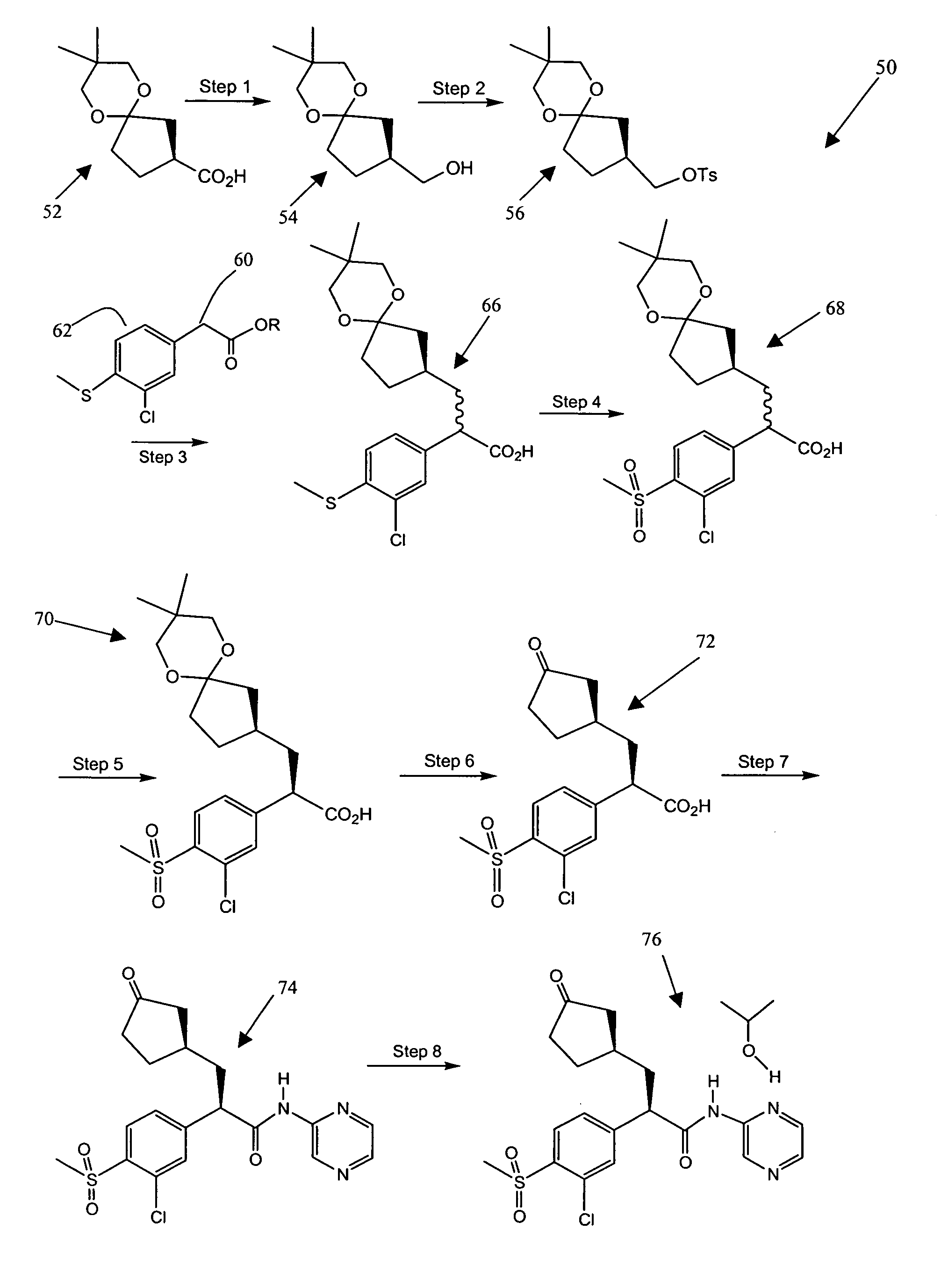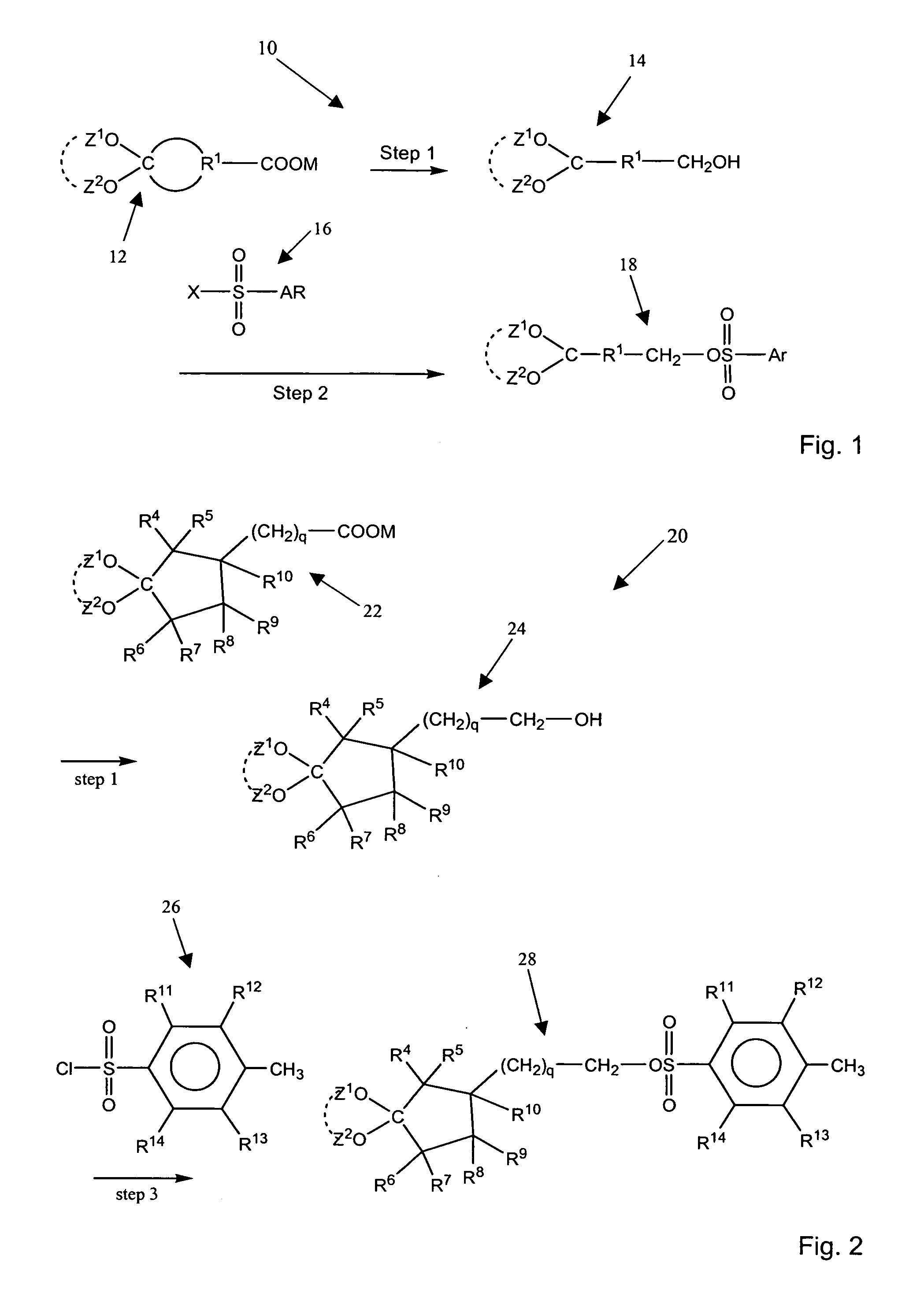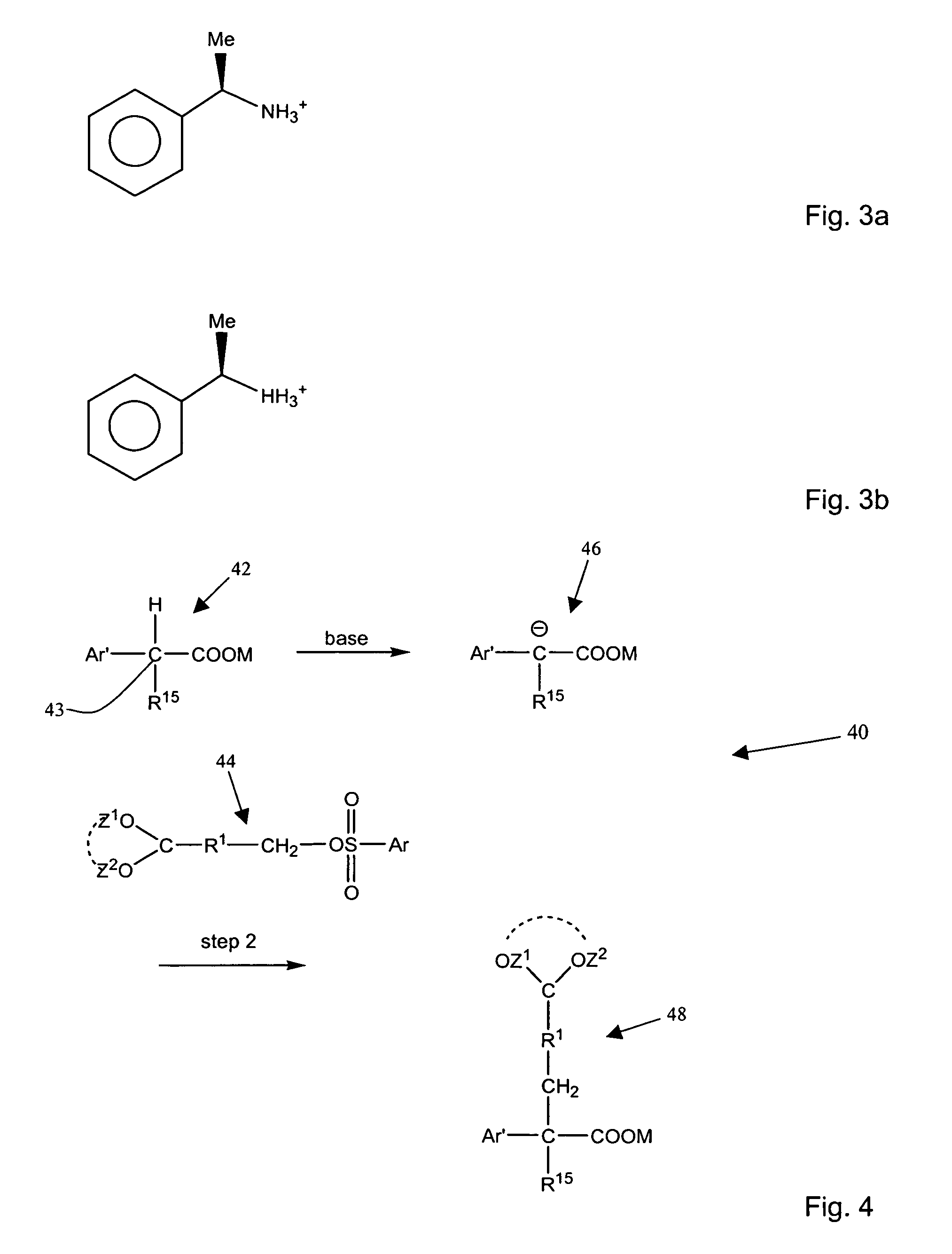Aromatic sulfonated ketals
a technology sulfonated iodide, applied in the field of aromatic sulfonated ketals, can solve the problems of difficult scale up of large-scale production of reaction schemes, difficult isolation and purification, and short shelf life of iodide, and achieve the effect of being easier to handl
- Summary
- Abstract
- Description
- Claims
- Application Information
AI Technical Summary
Benefits of technology
Problems solved by technology
Method used
Image
Examples
example 1
Synthesis of Tosylate
Salt Cleavage and (S)-Ketal-Acid Concentration
[0075]A 12,000 L glass-lined vessel was charged with 252.4 kg (752.4 mol) of (S)-Ketal-acid, (S)-MBA salt precursor of ketal acid 52 of FIG. 5 (this salt is described in Application A), followed by 1260 L (liters) toluene. The mixture (slurry) was cooled to 5° C. under nitrogen with agitation. To a 16,000 L glass-lined vessel was charged 212 L potable water followed by 318.0 kg 50% aqueous citric acid. The aqueous citric acid solution was cooled to 0° C. with agitation and then added to the ketal-acid salt slurry over 20 min while keeping the temperature of the reaction mixture below 5° C. The two-phase reaction mixture was warmed to 13° C. and allowed to settle for 30 min. The lower aqueous layer was separated. To the aqueous citric acid layer was added 504 L toluene. The two-phase mixture was stirred for 15 min at 14° C. and allowed to settle for 49 min at 14° C. The lower aqueous layer was separated. The two tolue...
example 2
Reaction corresponding to Steps 3 and 4 of FIG. 5
[0091]A mixture of 268 g THF and 177.7 g (1.00 equiv) of ethyl(3-chloro-4-(methylthio)phenylacetate were slowly added to a cold (<−15° C.) 20% solution of potassium tert-butoxide in THF (415.5 g, 1.02 equiv) and allowed to react over 2 hours at −15° C. to form a potassium enolate. A 1:1 solution mixture of 256.1 g (1.00 equiv) of the (S)-(8,8-dimethyl-6,10-dioxaspiro[4.5]decan-2-yl)methyl 4methylbenzenesulfonate and 321 g THF was transferred slowly to the cold enolate reaction mixture solution. The alkylation reaction mixture was stirred at <0° C., warmed to 40° C. and then held at 40° C. until the reaction was complete. The THF was distilled off under vacuum and the resulting ester product extracted into 629 g of MTBE and 445 mL water. The bottom aqueous layer was extracted with another 100 g MTBE. The resulting two MTBE / product layers were combined.
[0092]The resulting intermediate alkylation product ester as a MTBE solution was dire...
example 3
Epimerization Reaction, Dissolution, Recrystallization, Filtering and Drying
[0094]A 2000 L glass-lined reactor (vessel 1) was charged with 99.8 kg (232 mol, 1.00 equiv) of the reaction product 68 shown in FIG. 5 followed by 165.5 kg of denatured, 2B-3 ethanol. The mixture was stirred at 20° C. for 10 min. A solution of 112.5 kg 21% sodium ethoxide in ethanol was charged to vessel 1 followed by a line rinse of 5.1 kg denatured ethanol, 2B-3.
Chiral Epimerization
[0095]The mixture was heated to 65° C. and stirred for ˜6 hours. The mixture was then cooled to 55° C. and sampled by chiral HPLC to determine the diastereomer ratio. After the age with sodium ethoxide in ethanol the percentage of the undesired isomer was expected to be <20% (2S,3′R) relative to the (2R,3′R) isomer by chiral HPLC analysis and, indeed, in the lab, 14.7% to 18.5% (2S,3′R) was observed. This is as far as the epimerization can be taken in pure ethanol without significant production of aryl etho...
PUM
 Login to View More
Login to View More Abstract
Description
Claims
Application Information
 Login to View More
Login to View More - R&D
- Intellectual Property
- Life Sciences
- Materials
- Tech Scout
- Unparalleled Data Quality
- Higher Quality Content
- 60% Fewer Hallucinations
Browse by: Latest US Patents, China's latest patents, Technical Efficacy Thesaurus, Application Domain, Technology Topic, Popular Technical Reports.
© 2025 PatSnap. All rights reserved.Legal|Privacy policy|Modern Slavery Act Transparency Statement|Sitemap|About US| Contact US: help@patsnap.com



